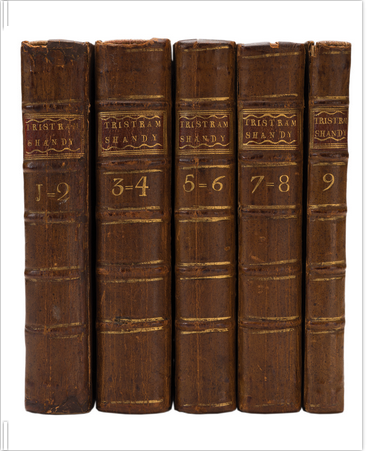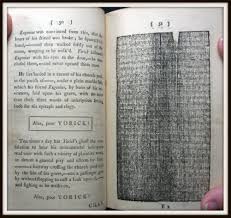 |
Reading a Giant Book in GULLIVER’S TRAVELS
They have had the art of printing, as well as the Chinese, time out of mind: but their libraries are not very large; for that of the king, which is reckoned the largest, does not amount to above a thousand volumes, placed in a gallery of twelve hundred feet long, whence I had liberty to borrow what books I pleased. The queen’s joiner had contrived in one of Glumdalclitch’s rooms, a kind of wooden machine five-and-twenty feet high, formed like a standing ladder; the steps were each fifty feet long. It was indeed a moveable pair of stairs, the lowest end placed at ten feet distance from the wall of the chamber. The book I had a mind to read, was put up leaning against the wall: I first mounted to the upper step of the ladder, and turning my face towards the book, began at the top of the page, and so walking to the right and left about eight or ten paces, according to the length of the lines, till I had gotten a little below the level of mine eyes, and then descending gradually till I came to the bottom: after which I mounted again, and began the other page in the same manner, and so turned over the leaf, which I could easily do with both my hands, for it was as thick and stiff as a pasteboard, and in the largest folios not above eighteen or twenty feet long. |
 ; the Author's Preface," Volume III, between Chapters XX and XXI; the asterisks in Chapter XXXIX of Volume VI; the missing chapter (XXIV) and Chapter XXV in Volume IV; the arabesque (squiggle, or "serpentine" line) in Chapter 4 of Volume IX; two blank chapters (18 and 19) in Vol IX that later reappear after chapter 25 as "The Eighteenth Chapter " and "The Nineteenth Chapter" in Volume IX
; the Author's Preface," Volume III, between Chapters XX and XXI; the asterisks in Chapter XXXIX of Volume VI; the missing chapter (XXIV) and Chapter XXV in Volume IV; the arabesque (squiggle, or "serpentine" line) in Chapter 4 of Volume IX; two blank chapters (18 and 19) in Vol IX that later reappear after chapter 25 as "The Eighteenth Chapter " and "The Nineteenth Chapter" in Volume IX ; the digression in Chapters 12, 14, and 15; blank spaces within Chapter II of Volume 3 and chapter 38 of volume VI; the fragment in Chapter 1, Volume 5; the musical score of Lilli Bullero sometimes printed in some later editions at the end of the blank version of Chapter 19 in Volume IX.
; the digression in Chapters 12, 14, and 15; blank spaces within Chapter II of Volume 3 and chapter 38 of volume VI; the fragment in Chapter 1, Volume 5; the musical score of Lilli Bullero sometimes printed in some later editions at the end of the blank version of Chapter 19 in Volume IX. ; the translation of Slawernbergius’s Tale of the Promontory of Noses (originally in Latin) in place of the first chapter of Volume IV with facing bi-lingual pages and a footnote about the original and the copy (pp. 196-217 of the Oxford World's Classics); the blank page, Chapter 38, Vol 6
; the translation of Slawernbergius’s Tale of the Promontory of Noses (originally in Latin) in place of the first chapter of Volume IV with facing bi-lingual pages and a footnote about the original and the copy (pp. 196-217 of the Oxford World's Classics); the blank page, Chapter 38, Vol 6 ; inserted stories within the story in Chapter 19 of Volume VIII.
; inserted stories within the story in Chapter 19 of Volume VIII.












